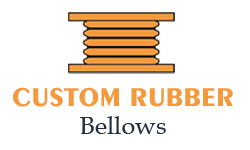Know about bellows and their types like Rectangular Bellows British Columbia
The word "bellows" is synonymous with the ancient leather bellows used to blow air into fireplaces. Bellows are a crucial component of many modern equipments used in various sectors. These components are also known as machine way covers, flexible covers, convolutions, and accordions.
Bellows are made from a variety of materials, including metal and leatherette, and come in a variety of sizes and shapes like Rectangular Bellows British Columbia . What function do they fulfill? Do bellows come in a variety of styles? For the answers, read this post.
What is Bellows?
Bellows are useful covers that may be opened and closed as needed. They frequently serve as protective covers for the main parts of a machine rather than being the main part.
Bellows for a fireplace or camera are two examples where they are an exception because these goods would not function or even exist as we know them without them.
In addition to being used as dental and surgical table components, bellows can also be used as heat shields, light seals for camera optics, medical ventilators, protective coverings for linear rails, and ball-screw covers. Some can allow compression and expansion while holding onto liquids and gases in settings under pressure.
The fundamental traits of a well-made functional cover are its ability to strike a balance between strength and flexibility and mobility. Custom-made bellows must be made to the specifications of the application.
What are the Various Bellows Types?
In general, bellows can be divided into three types based on how they are made. As follows:
Welded Bellows: As their name suggests, these bellows are made by joining several pattern forms together via welding. There are various methods for conducting welding. Two crucial welding processes utilized to make bellows are RF welding and thermal welding.
RF Welding: The bellows are made by joining numerous thin, sensitive thermoplastic sheets together using RF welding. This technique is also known as RF sealing, high-frequency welding, or dielectric sealing since the fusion takes place at high radio frequencies, often between 13 and 100 MHz.
Thermal Welding: Bellows are made using the welding technique known as thermal welding, which combines pressure, heat, and speed. Thicker materials are fused using thermal welding.
Sewn Bellows: A single piece of coated fabric is used to make these bellows. These bellows are easily able to tolerate operations at high speeds and cycles.
Who requires bellows?
Critical components are most frequently protected by bellows. Actuators used in motion control devices are frequently subjected to impurities such as metal shards, weld spatter, and abrasive grit. Protecting results in a complete of slides, cylinder rods, and other mechanisms from these wear-inducing substances is necessary.
Other times, bellows may be utilized in the vicinity of pinch points to lessen the risk of accidental contact with machine components. For air exhaust/intake applications like motor drives cooling on light rail vehicles, bellows are also employed as flexible ducting.
What kinds of materials are used to make the bellows?
The environment influences the selection of the hundreds of materials available from Custom Rubber Bellows, thus gathering information about the customer's application is essential. When selecting a protective cover, the application specialists will take into account the presence of abrasion, liquids, chemicals, and operating temperatures along with a variety of physical criteria.
Typically, elastomer or thermoplastic coated cloth, pure elastomer, or a thermoplastic film are used to create bellows. The main thermoplastics include PVC and polyurethane, whereas silicone and chlorosulphonated polyethylene (CSM) are frequent elastomers. Nylon, polyester, and specialized fibers like para-aramid, fiberglass, and others are used as textile substrates.
Different Bellows We Provide
Rectangular Bellows
Rectangular Rubber Bellows British Columbia is specifically utilized in low-pressure ducting to absorb vibration from equipment and duct thermal expansion. To accommodate axial and lateral movement brought on by the system's thermal expansion, rectangular expansion joints include a single-miter camera, rounded corners, and a single camera.
Rectangular Bellows British Columbia is one of the most highly regarded products that Custom Rubber Bellows company offers to customers. According to our customer's needs, we provide these products to them in a variety of sizes and specifications.
Cylinder Bellows
Cylinder Bellows serves as both pneumatic and driving spring elements. Cylinder Bellows British Columbia performs pressurizing and exhausting duties while serving as a drive component. The force produced decreases in ratio to the bellows' contractional force as the stroke lengthens.
Hydraulic Cylinder Bellows British Columbia serves as a cushioning element when they receive constant pressure. The straightforward construction comprises two metal plates and rubber bellows with ribs. There are no mechanical moving parts or sealing components.
Round Bellows
To protect the guideway sand spindles in various types of machines, Round Bellows are employed. Depending on your specific needs, different materials can be used to build individual bellows.
Rubber Bellows
Expansion joints made of rubber are used to shield moving mechanical parts from moisture and dust. The Round Rubber Bellows can stretch and shrink while still maintaining a tight seal thanks to the concertinaed sides.
Rectangular Bellows is one of the most highly regarded products that our Custom Rubber Bellows offer to customers. According to our customer's needs, we provide these products to them in a variety of sizes and specifications. Even the sizes and dimensions can be changed to suit the needs of the machinery.






